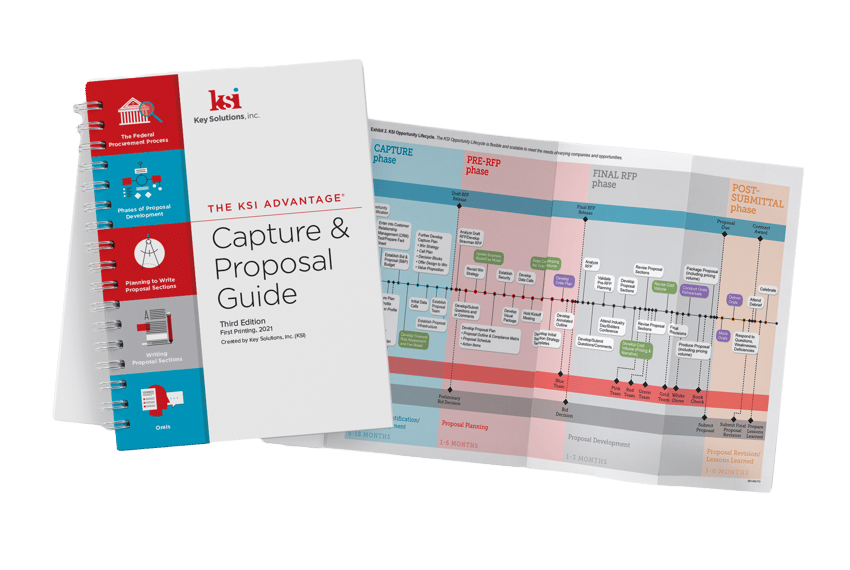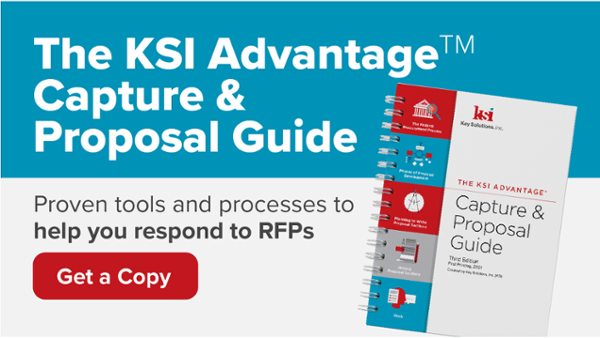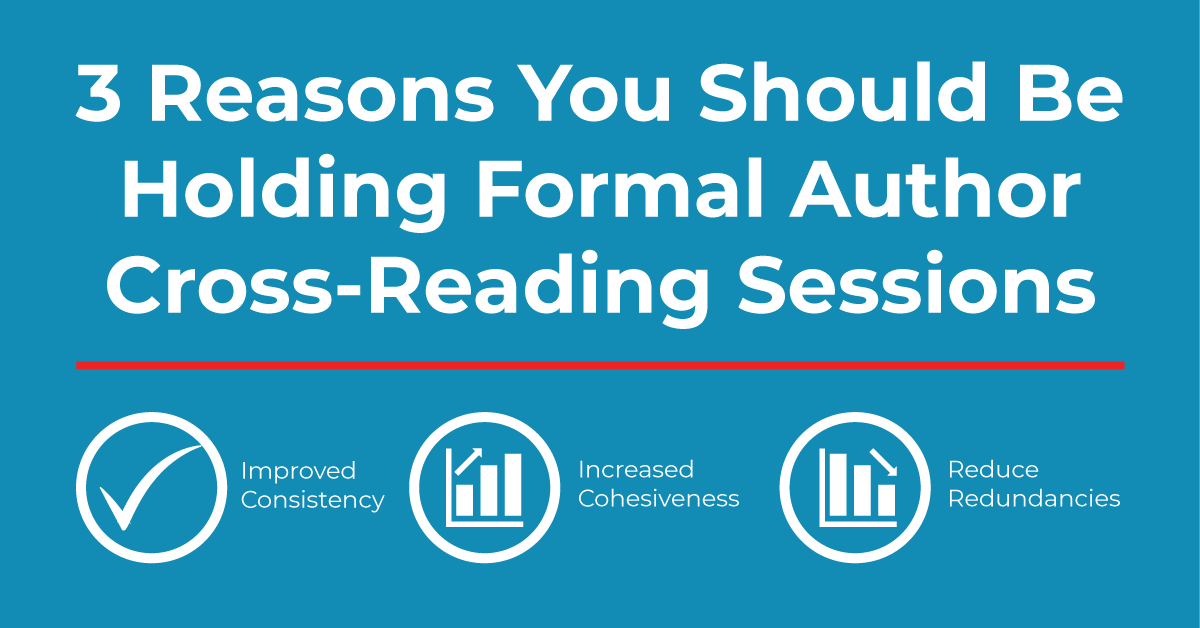
The Cost or Price Proposal is exactly what it sounds like: a detailed account of the costs of your Technical and Management Approaches for a potential government contract.
The Cost Volume has the same formal process as the Technical/Management Volumes, so it is important that you have a good step-by-step Cost Proposal method. That’s where our KSI Advantage© Capture & Proposal Guide can offer a helping hand.
With more than 35 years of experience in federal proposals, we have developed a successful Cost Volume Process, described in our guide, that can help you and your company write a winning Cost Proposal.
Let’s briefly cover what the KSI Advantage© Approach can do for you when it comes to the dollars and cents of your proposal.

Developing Your Cost Proposal
The most important RFP sections to your Cost Proposal are Sections B, C, H, L, and M. Section B tells you how to format your pricing and is perhaps the most relevant section for your Cost Proposal. Section C, which contains the SOW, often includes other direct costs (ODCs) that will have to be factored in, and Section H may have hidden costs as well. Section L will tell you the structure you will need for your Cost Proposal, and Section M describes how the Cost Proposal will be evaluated.
The Cost Volume Manager is in charge of reading the RFP to ensure all these sections are taken into account and that all cost items are included in the Cost Proposal.
But having all the numbers is not enough. The government wants to have a narrative included with Cost Proposals, not just a list of dollar figures. This narrative needs to focus on how the Cost Proposal supports the Technical Approach. The Cost Volume Manager should consult with the Proposal Manager and Capture Manager before writing the narrative to ensure consistency.
Cost Volume Management
The Cost Volume is typically developed in parallel with the Technical Proposal. The Integration and Compliance Manager will perform a check across all volumes, but the Cost Volume Manager still needs to work closely with the Proposal Manager and Capture Manager to guarantee consistency with the Technical Proposal.
A pricing point of contact should be identified for each team member, subcontractor, or internal entity involved with cost. The Cost Volume Manager needs to conduct a cost strategy session with all these points of contact, as well as with the Proposal Manager and Capture Manager, before writing the Cost Proposal. This session should discuss:
- the pricing approach,
- establish what to include in the Cost Proposal,
- and baseline a schedule consistent with the Proposal Manager’s overall proposal schedule.
Close interaction between the technical and pricing teams is important to ensure consistency across the volumes.
Schedule Development
The Cost Volume schedule has a separate timetable than the schedules for the Technical/Management Approaches, so the Cost Volume Manager needs to have independent deadlines for all Cost Proposal materials, including cost items, subcontractor pricing packages, reviews, and final sign off.
Cost Volume Process
*If you have a KSI Advantage Guide, you can review this process in Section 2.0.
Once all of the above steps are complete, the actual Cost Volume Process is relatively straightforward:
- Automate Section B in a spreadsheet, to help avoid late submission in case there are any last-minute changes.
- Meet with technical staff to gather items like staffing, supplies, materials, ODCs, and any subcontract information.
- If the requirements call for it, send price quotes to vendors.
- Using your company’s standard pricing model, input staffing by the contract line item numbers (CLIN) of Section B.
The Cost Volume Process is when you begin incorporating all the different cost items and data you have gathered. A full list is available in our guide in Section 2.0, but a few of the most important factors are:
- Hourly rates for all proposed personnel
- ODCs
- Subcontractor costs (usually obtained through a Subcontracts Manager)
- General and administrative (G&A) costs
- Fringe benefit costs (e.g., PTO, unemployment tax, welfare, pension, etc.)
After including this data, you will need to write a detailed cost rationale compliant with Section L. This needs to include your reasons for staffing, any assumptions made, a walk-through of the spreadsheets, and a description of your accounting system. Particularly for best-value awards, this is your opportunity to demonstrate to the government the value that your solution brings.
Conclusion
Contracts are often won and lost on price. Having detailed and holistic Cost Proposal matters, and that’s just what our KSI Advantage© process delivers. Our KSI Advantage© Capture & Proposal Guide can help save you time, resources, and stress. It will help streamline your processes and explain the nuances of the proposal lifecycle that can baffle rookies and the experienced alike. For more on the nature of federal proposal pricing, check out our podcast episode on pricing.
This article is part of our KSI Advantage© blog series written by Jake Lamarche. Each article aims to help proposal professionals understand a different part of the proposal process using tips and tools from our KSI Advantage© Capture & Proposal Guide.








